Does Jasmine Need Full Sun?
Yes! Jasmine requires either full sun or partial shade. Full sun requires 6 hours or more of direct sunlight per day, while partial shade requires 2 – 4 hours per day. A plant’s sun requirements are determined by the specific variety of jasmine you plant and the climate and other environmental factors.
Table of Contents
Can Jasmine Survive Full Shade?
Yes, but the plant will not reach its full potential. For jasmine to grow and bloom, you must ensure that it receives 6 hours of direct sunlight a day. If your plants are growing in partial shade or low-light situations (such as being indoors), then only 2 – 4 hours of direct sun is needed each day to promote healthy growth and flowering! Some Jasmine varieties do well in full shade.
Jasmine Varieties and Their Sun Requirements
Arabian Jasmine
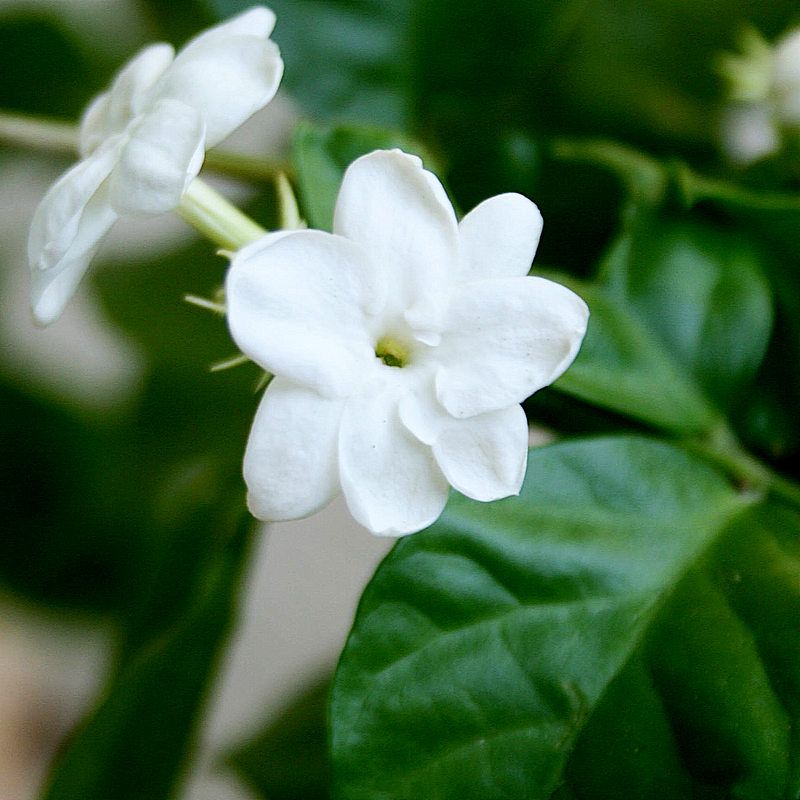
It is an evergreen vine that twists and twines over any available support, reaching heights of 6 to 10 feet and widths of the same. In warm climates, it produces white flowers with a diameter of 1 inch that bloom almost continuously. The most widely cultivated cultivar, J. Sambac “Grand Duke of Tuscany,” also known as “Flore Pleno,” produces double flowers that resemble miniature gardenias and is the most widely planted. Depending on the variety, Arabian jasmine can grow outdoors in USDA plant hardiness zones 9 through 11. When growing in zones 8 and 9, mulch it thoroughly before the first hard freeze; otherwise, it will freeze to the ground in the winter and grow again in the spring.
Spanish Jasmine
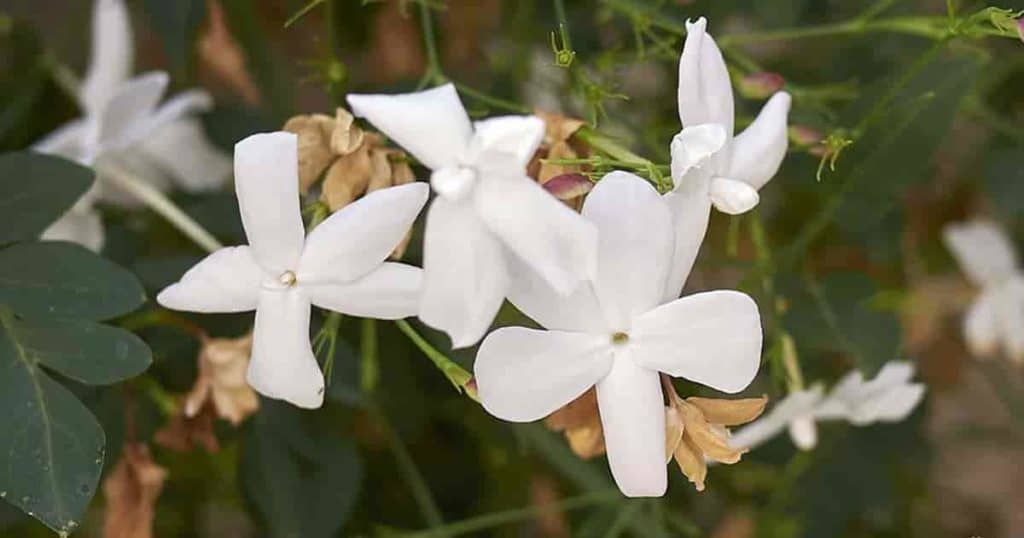
Jasmine, also known as royal jasmine, can grow to be 15 feet tall and cover fences and trellises with its dark green foliage in a short period. From mid-summer to mid-fall, it produces edible white tube-shaped flowers that range in width from three-quarters to one inch wide and have varying lengths. The petals of the flowers are tinged with pink at their bases. J. grandiflorum is a perennial plant grown in USDA zones 8b through 10.
South African Jasmine
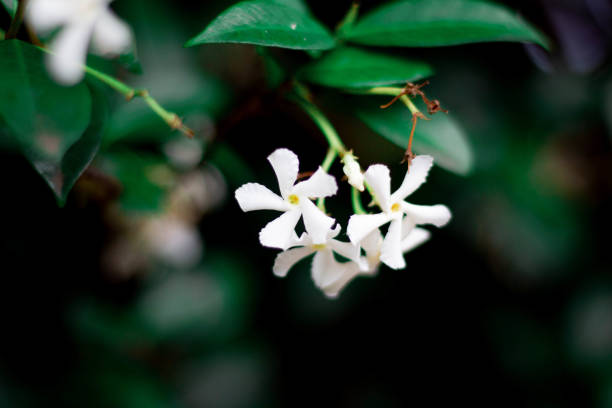
It can grow 15 to 20 feet long and 8 feet wide if provided with sufficient support. It can be grown as vines and groundcovers in various conditions. It produces clusters of three to seven star-shaped flowers about a quarter-inch wide and looks lovely in arrangements. In USDA zones 9 and 10, South African jasmine can be grown successfully.
Pink Jasmine
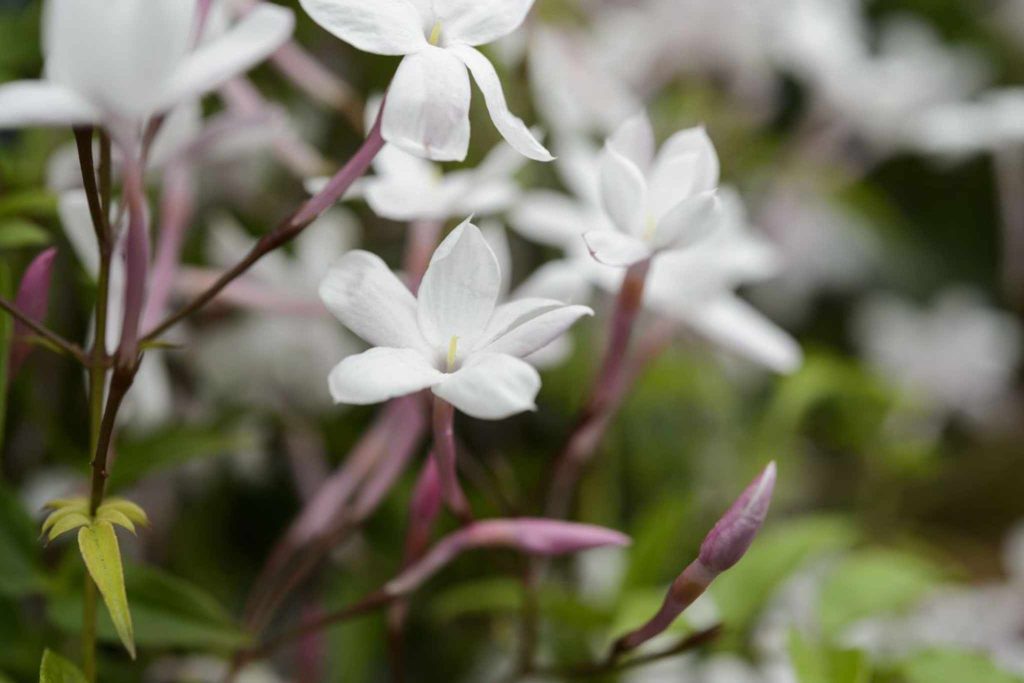
Pink Jasmine is a fast-growing evergreen vine that can cover a wall, arbor, or trellis up to 20 feet in height in a short period. It produces pink buds that open to reveal an abundance of fragrant white flowers in the late winter and early spring. It’s hardy jasmine that can withstand temperatures as low as 20 degrees Fahrenheit and is grown in USDA zones 8 through 11. It is a fragrant flower grown in USDA zones 8 through 11.
Gold Coast Jasmine
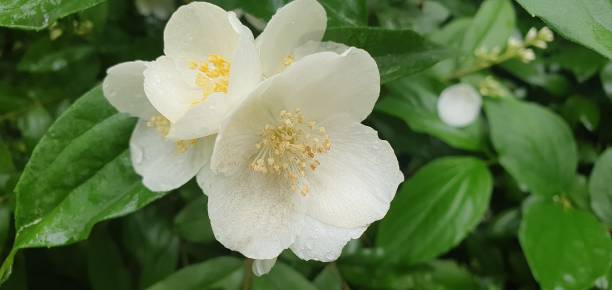
The evergreen Gold Coast jasmine (J. Dichotomum) is quick-spreading jasmine native to tropical West Africa. It can grow up to 26 feet high and produce fragrant white flowers that open only at night, making it look great in containers. Although it is not classified as invasive in California, it can spread rapidly in the canopies of mature trees. It is considered invasive in Florida, where it is classified as such. Growers of Gold Coast jasmine can expect success in USDA zones 9 through 11.
Common Jasmine
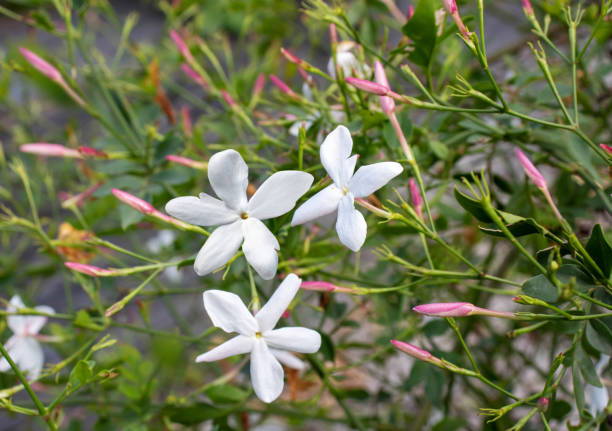
Jasmine needs full sun to thrive. They can withstand light shade, but this variety will display far less vivid flowers due to the lack of sunlight. Jasminum officinale typically grows up to 15 feet tall and 12′ wide in U.S Department of Agriculture plant hardiness zones 9 – 11, so it’s not a tree or bush-type jasmine foliage type.
Evergreen Jasmine
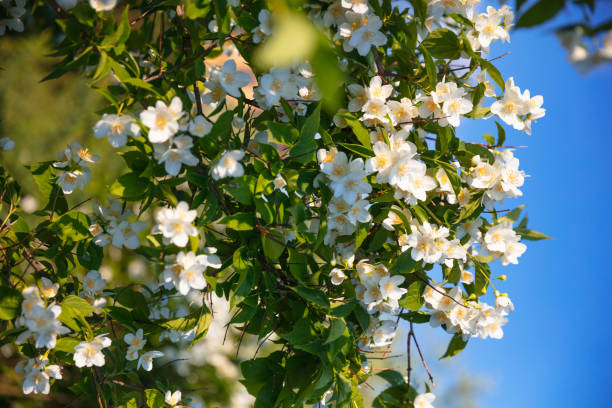
Evergreen jasmine requires full sun or partial shade. Full-sun plants will grow up to 10′ tall in USDA zones 9 – 11 and need at least 4 hours of full sunlight every day in summer. The lower the growing preference is for your plant’s particular location, the shorter its appropriate height can be while still providing an excellent flowering display during peak blooming season.
Winter Jasmine
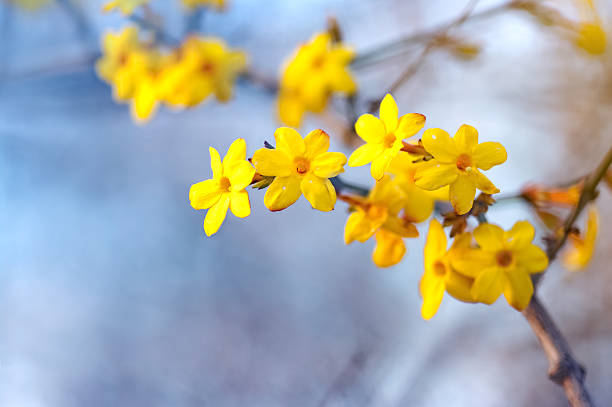
Winter Jasmine is a fast-growing ground cover. The plant blooms high above the leaves and grows about 32 inches wide, with flowers 2 feet tall and 3 feet across. This is an excellent choice for areas with full sun but does require some protection from freezing temperatures in cold climates.
Angelwing Jasmine
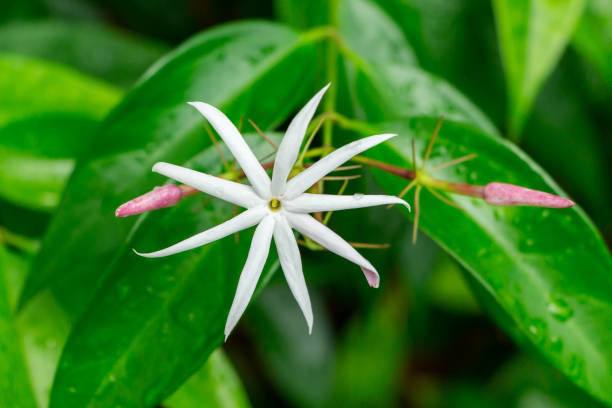
Ground cover Jasmines are fast-growing, so they should be planted in full sun to get the best results. Full direct sunlight for six hours or more each day is required for optimal growth. In cold areas, these types of jasmine will appreciate some protection from freezing temperatures during the winter months and may perform better if they have enough potted space below their 6 feet tall canopies.
Carolina Yellow Jasmine
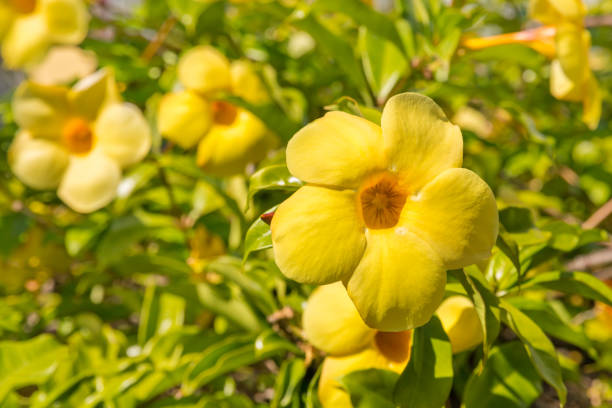
It is hardy in USDA plant zones 7 to 10. It’s also known as Carolina yellow jasmine, Jessamine, and false jasmine. Flowers are produced in abundance from mid-winter to mid-spring, and they are a bright yellow funnel-shaped shape. As a ground cover, it will reach a height of about 3 feet before the long vine-like stems begin to spread across the ground. It can be very effective when used as a ground cover on hillsides or in large landscaped areas. If possible, choose a planting site that receives six to eight hours of direct sunlight per day. However, this jasmine can also thrive in light shade with only four hours of direct sunlight per day.
Star Jasmine
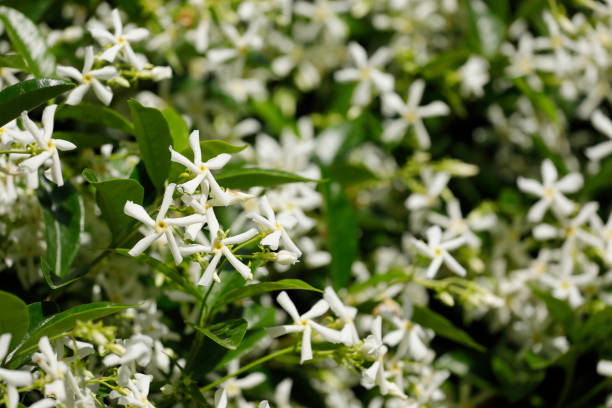
Jasmine, also known as Confederate jasmine and star jasmine, is not true and should not be confused. However, it has a similar appearance to true jasmine and produces white pinwheel flowers with a diameter of 1 inch in the spring. It is only winter hardy in climates ranging from zones 8 to 10. Star jasmine naturally grows between 3 and 6 feet tall, but it can be sheared to be as low as 2 feet tall and still form a dense ground cover. It is better suited as a ground cover in large, landscaped areas where multiple plants can be planted 3 to 6 feet apart to provide a uniform appearance. When planted in full sun or partial shade, this jasmine-type ground cover grows quickly and is drought tolerant within one to two years of establishment.
Dwarf Confederate Jasmine
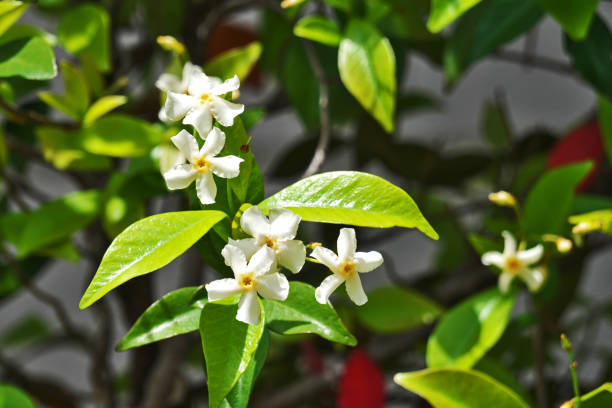
The dwarf confederate jasmine, also known as small leaf confederate jasmine and dwarf confederate jasmine, is closely related to the star jasmine. Zones 7 to 11 are suitable for growing it, and they can reach a maximum height of 15 to 20 inches. It is appropriate for use as a groundcover in landscaped areas of any size, and it blooms throughout the year. It blooms during the spring season and produces yellow flowers in the shape of stars. Planting sites in full sun, partial shade or full shade are acceptable; however, in hot, Mediterranean climates, it is recommended that planting sites be shaded from the afternoon sun. After it has become established, this plant is also drought-tolerant. To maintain fuller, more healthy plant growth, it should be sheared down each winter until about 3 to 4 inches in height.
Dwarf Jasmine
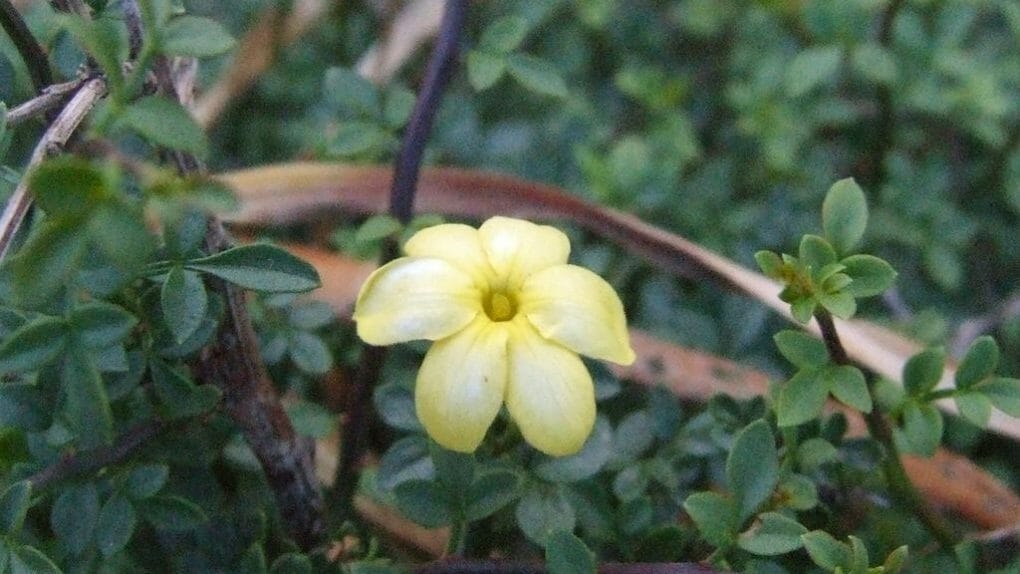
In the Oleaceae family, this jasmine is a dwarf variety that grows up to 1 foot high and 2.5 feet wide in the western Himalayas. It is native to the west of the Himalayas. The shrub grows as a mound of slender spreading stems in various soil conditions, though it prefers well-drained soils to flourish. It can withstand exposure to full sun to partial shade.
Italian Jasmine
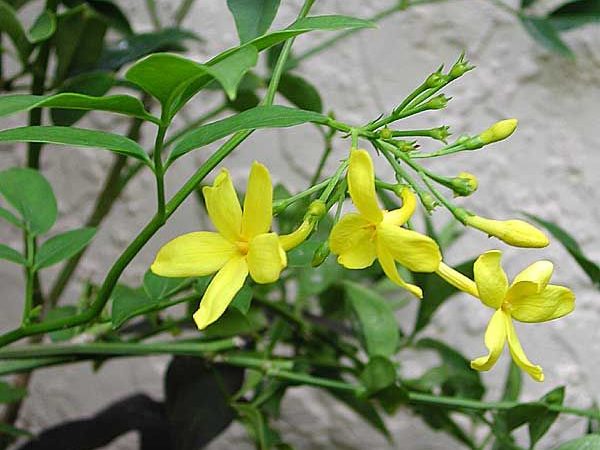
The sun requirement for Italian jasmine is between full and half shade. The sunlight minimally needs to reach past 6 hours a day. Under these conditions, it thrives in the spring season. Still, it must be protected from frost throughout winter (seedlings or small plants should not be exposed to freezing temperatures below 20℃ without protection). It grows sweeter and fuller if regularly pruned as needed. About 2-4 years after the plant has started growing, xeriscape gardens with access to a garden center in the United States have been reported.
